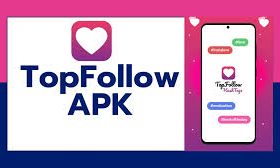In the contemporary landscape of digital technology, the capability to generate precise tone frequencies online has emerged as an indispensable resource across diverse disciplines. Musicians employ it for instrument tuning, scientists integrate it into experimental protocols, and researchers delve into the therapeutic applications of sound. This comprehensive guide navigates the myriad methods available for generating tone frequencies on the internet, accommodating users with varying requirements and levels of technical proficiency.

1. Online Tone Generators
For those seeking a user-friendly and expeditious solution, online tone generators present an accessible avenue for producing specific frequencies. Prominent platforms such as tonegen.net (Best online tone generator). provide intuitive interfaces, featuring adjustable sliders for frequency, amplitude, and waveform selection.
The sine wave, recognized for its purity, is frequently employed as the waveform of choice. These platforms facilitate real-time playback, rendering them particularly suited for instrumental tuning or swift diagnostic assessments.
2. Mobile Apps for Tone Generation
The convenience of generating tone frequencies extends seamlessly to mobile devices through specialized applications. Noteworthy examples include ToneGen for Android and Signal Generator for iOS, applications designed to transform smartphones into portable tone generators. With streamlined interfaces and supplementary features such as preset saving, these applications cater to musicians engaged in mobile rehearsals or individuals requiring immediate and portable tone-generation capabilities.
3. Browser-Based Audio Software
For users seeking enhanced control and customization, browser-based audio software emerges as a robust solution. Platforms such as Audiotool and Soundation offer online digital audio workstations (DAWs), providing users the ability to create, edit, and export audio files. By incorporating oscillators or waveform generators within these environments, users gain access to more advanced and versatile tone-generation capabilities, catering to those with a sophisticated approach.
4. Coding and Programming
For individuals possessing technical acumen, programming languages such as Python or JavaScript provide a nuanced avenue for tone frequency generation. By leveraging libraries like Web Audio API or PyDub, users can script precise tone generation, affording meticulous control over parameters. This method is particularly advantageous for those integrating tone generation into larger projects or seeking automated functionalities.
javascript code
// Example JavaScript code using Web Audio API
var audioContext = new (window.AudioContext || window.webkitAudioContext)();
var oscillator = audioContext.createOscillator();
oscillator.type = 'sine';
oscillator.frequency.setValueAtTime(440, audioContext.currentTime);
oscillator.connect(audioContext.destination);
oscillator.start();
oscillator.stop(audioContext.currentTime + 3);
Conclusion
The realm of online tone frequency generation stands as a versatile and sophisticated domain, offering solutions tailored to an array of professional contexts. Whether refining musical instruments, conducting scientific experiments, or engaging in creative endeavors, the tools delineated herein accommodate a spectrum of needs. Embrace the manifold possibilities, experiment judiciously with diverse settings, and discover how this digital proficiency can elevate professional pursuits, presenting novel avenues for exploration and creativity.












